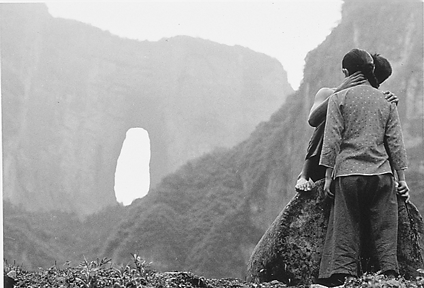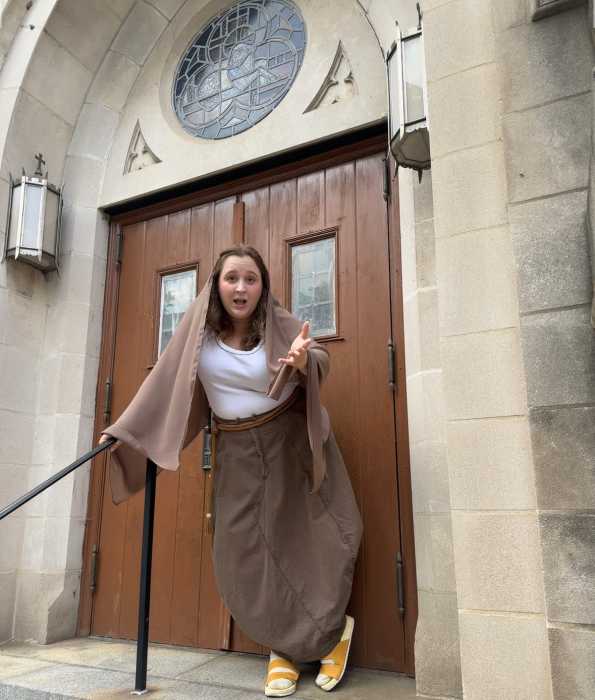Novel’s film adaptation explores love during China’s Cultural Revolution
It is not surprising that the world’s most populous nation, China, an economic powerhouse with limited Western contact, is the subject of a spate of recent films.
“Balzac and the Little Chinese Seamstress” blends a Western storytelling style with a look at a critical period in the history of the Peoples’ Republic of China, the Cultural Revolution.
Adapted from the best-selling autobiographical novel by Dai Sijie, who also directed the film, “Balzac” recounts Sijie’s experience in a remote, rural “re-education” during the latter days of what was termed the Great Proletarian Cultural Revolution.
On a national level, the purges, show trials and state-sponsored terror helped Mao Zedong secure his position by encouraging young Red Guards to run rampant and suppress any internal dissent.
For citizens haplessly caught up in the political intrigue, though, the consequences were often dire, including imprisonment, or forced indoctrination and even death.
“Balzac” opens with the arduous trek, along a steep footpath across rocky peaks, of two teenage boys sent for “re-education” into the Chinese countryside. While the middle-class boys, Ma (Ye Liu) and Luo (Kun Chen), the sons of doctors, toil up a rocky hillside day after day with large buckets of liquid manure on their backs, the head of the village (Shuangbao Wang) exhorts them with Marxist-Maoist slogans extolling the virtues of hard work. The boys save a violin from a fire by claiming a classical composition is “Mozart Thinking of Mao.” The uneducated village leader is too fearful, though, to believe them.
Luo and Ma are the only literate people in the village and several of their few possessions, such as a wind-up alarm clock, fascinate their peasant neighbors. In time they meet “the little Chinese seamstress” (Xun Zhou) and her grandfather, the old tailor. As expected, both young men fall for the beautiful girl, but Ma alone gets to consummate his feelings for her.
After they steal a cache of forbidden translated Western classics from “Four Eyes” (Hongwei Wang), both young men, however, get to show their love for the young beauty by teaching her to read and write
The adaptation of Sijie’s autobiographically inspired tale succeeds in the film’s stunning visuals. The pencil-like peaks and cavernous gorges create a visual representation of how Luo and Ma feel cut off from their upbringing. A scene of the two spying on girls bathing under a waterfall paints a picture evocative of Manet’s “Luncheon on the Grass.”
Since they can read, Luo and Ma are sent into a nearby town to watch subtitled films from Albania and North Korea, China’s communist allies, and come back to retell the stories to the villagers. The boys not only embellish the stories to make them more interesting (and less political), but they help recreate the scene, scattering rice while recalling a scene during a snowstorm. Later, the film’s one sex scene is one of the more artful ones brought to recent screens.
Sijie, who wrote the novel in French, tells this tale very much like the authors of the “forbidden” books they use to educate the seamstress.
Like Flaubert’s “Sentimental Education,” there is the nostalgic story of a love affair told with great realism. And like any Balzac novel, most of the tale is back-story, helping explain “the current situation.” Not only does the film look back at the China of the 1970s, we also see Luo and Ma later on in their lives, looking back at their time up in the hills, in love with the same girl, only voicing it aloud to one another after it’s all over. Part of the “sentimental education” here is that the seamstress, having seen the world beyond the hills via literature, eventually has to go see it for herself, never to be found again by Luo or Ma. Even more sentimentally, a construction project threatens to destroy the gorges altogether.
The great irony of this beautifully told love story is that the book, and the movie, are currently off-limits to the Chinese. While the film’s remote, penal setting frames the narrative, Maoist oppression takes a back seat to the love triangle that is at the center of “Balzac.” After a while, you do start to wonder how Luo and Ma have all this free time to pursue the seamstress and give her an education. When we meet Ma and Luo later on, they reminisce about their re-education as if they were two former bunkmates at a summer camp. Far from being traumatized, they seem to have happily moved on with their lives.
What the film does, most of all, is glory in the ideal of love—first love, companionship, and the love of ideas and education.
“Balzac and the Little Seamstress” proves throughout what the Chinese government is afraid of—that ideas can change society, even if it’s one person at a time.
gaycitynews.com
































